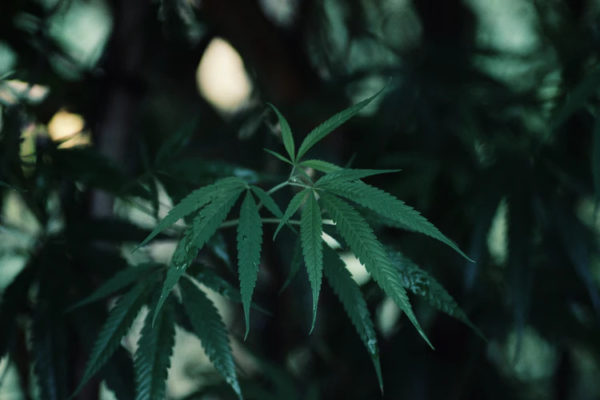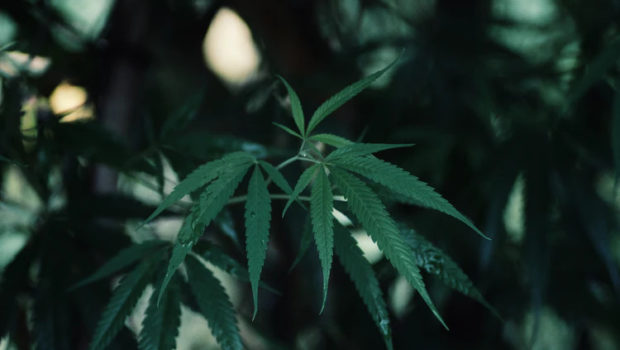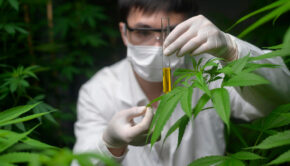Technology and the CBD Industry: What’s the Connection?
Over the last several years, the CBD industry has exploded, spreading across the U.S. at a rapid pace. And the trend is set to continue: By 2022, hemp-derived CBD products are projected to bring in $22 billion in sales. The most in-demand cannabis derivative on the market, CBD oil is a common homeopathic tool, with applications including pain and anxiety as well as the reduction of symptoms related to eczema.
As we delve deeper into the 21st century, technology is part of everything we do, and every aspect of our lives. Further, technological advancements are crucial to the success of every global industry in modern times, helping to streamline both production and distribution methods. The CBD industry is no exception.
And as the demand for CBD products continues to grow, technology rapidly develops alongside it. The dynamic CBD industry is poised to fuel technological advancements throughout the wellness market, from supply chain distribution to agricultural and farming practices. In addition, the technology behind CBD oil extraction continues to evolve as well. Today, water-soluble CBD oil exists alongside oils collected via liquid solvent and CO2 extraction methods.

CBD Oil and the Law
Every CBD product on the market is extracted from the cannabis plant, either in the form of hemp or marijuana. Where legality is concerned, it’s important to properly distinguish between the two plants, as marijuana is more heavily regulated than its cousin hemp. The reasons behind varying legal regulations are complex, but ultimately come down to a single compound: THC.
All cannabis plants contain hundreds of naturally occurring cannabinoids. Of those compounds, cannabidiol (CBD) and tetrahydrocannabinol (THC) are the most well-known. THC is famously psychoactive and heavily regulated by various governments throughout history. Between 1938 and 1996, in fact, every form of cannabis was completely illegal throughout the U.S., from live plants to smokable flowers and industrial hemp.
California broke that streak with the passage of Proposition 215, legalizing marijuana for medical use. Because industrial hemp has long been lumped alongside its psychoactive cousin, the benefits of CBD long went unnoticed. But Prop 215, along with the 2018 Farm Bill, opened up the floodgates in regards to our understanding of CBD.
The Myriad Applications of CBD
All things considered, CBD is an amazingly diverse compound. Alongside its mental health and skincare-related applications, CBD may also provide a safe, natural alternative to pain relief in lieu of opioids. In this way, the cannabis plant may finally be able to shed its infamous reputation and help solve a public health crisis that’s spiraling out of control.
According to Western Governors University, the opioid epidemic comes with a hefty price. More than 47,000 Americans died of an opioid overdose in 2017, and the economic cost of the epidemic numbers in the billions. Fueled by advancements in technology, nurses and other healthcare professionals are on the hunt for non-addictive pain control methods to replace or complement traditional opioid-based treatment. For many, CBD oil provides a viable option that’s safe, naturally derived, and non-habit-forming.
Modern CBD Extraction Technology
Depending on the condition requiring treatment, CBD can be ingested, inhaled, or even applied topically in the form of creams or pain relief patches. The versatility of CBD notwithstanding, the compound must be extracted from the hemp or marijuana plant prior to use in any product or homeopathic treatment. If a below-0.3% THC content is desired, it’s imperative that the CBD oil is extracted from a verified hemp plant.
There are several ways in which to make CBD oil, each of which has its benefits and downsides. And as technology continues to advance, CBD extraction methods are becoming more efficient, more streamlined, and increasingly cost-effective. For instance, the isolate method extracts pure CBD, in the form of a crystal, that’s free of all other cannabinoids, fatty acids, and terpenes. CBD oil created with the isolate method is guaranteed to be free of even trace amounts of THC, an important consideration on the business side of the CBD industry.
The Business of CBD
Of course, there are numerous sides to the CBD industry, and technology has a starring role in nearly every scene. At its core, CBD oil is an agricultural product, and plenty of work goes into turning hemp seed into usable CBD oil. Fields must be prepped, properly fertilized, and watered regularly to ensure high yield and quality crops.
Like the contemporary CBD industry, industrial hemp grows at a brisk pace and is ready for harvest approximately two months after planting. Once it is harvested, using top-of-the-line agricultural tools, plants must be shipped to extraction facilities, often requiring large fleets of vehicles and plenty of logistics.
Here, technology once again gets its chance to shine. Thanks to artificial intelligence (AI) tech, shipments can be tracked in real-time, allowing for more precise operation management and improved safety. By accurately interpreting driver data, AI can also be used to identify trends and behaviors that are negatively impacting a company’s bottom line, while also helping to propel the CBD industry into the future.
Key Takeaways
Even as our world changes and evolves post-COVID, technology remains a constant presence. Within the CBD industry, technological advancements such as extraction technology and AI-fueled fleet management provide both time and cost savings to business owners. Further, the pure CBD oil created with modern technological methods can hemp provide natural symptom relief to millions of people, improving public health on an unprecedented scale.
















